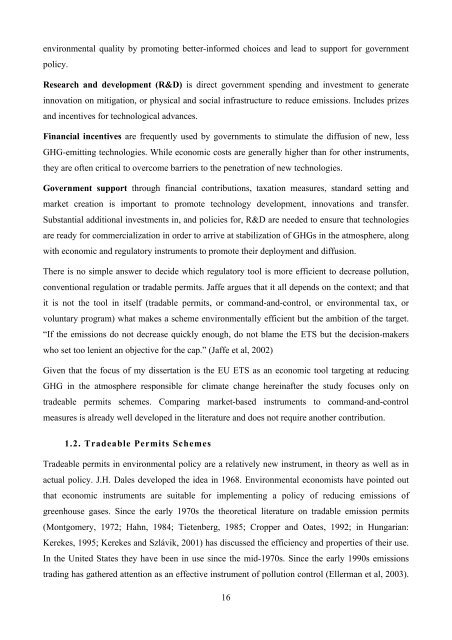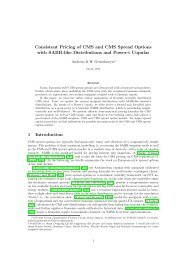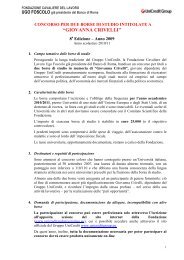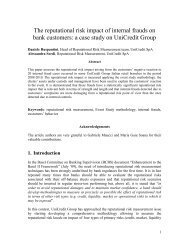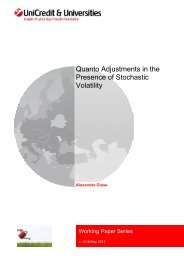Dóra Fazekas Carbon Market Implications for new EU - UniCredit ...
Dóra Fazekas Carbon Market Implications for new EU - UniCredit ...
Dóra Fazekas Carbon Market Implications for new EU - UniCredit ...
Create successful ePaper yourself
Turn your PDF publications into a flip-book with our unique Google optimized e-Paper software.
environmental quality by promoting better-in<strong>for</strong>med choices and lead to support <strong>for</strong> government<br />
policy.<br />
Research and development (R&D) is direct government spending and investment to generate<br />
innovation on mitigation, or physical and social infrastructure to reduce emissions. Includes prizes<br />
and incentives <strong>for</strong> technological advances.<br />
Financial incentives are frequently used by governments to stimulate the diffusion of <strong>new</strong>, less<br />
GHG-emitting technologies. While economic costs are generally higher than <strong>for</strong> other instruments,<br />
they are often critical to overcome barriers to the penetration of <strong>new</strong> technologies.<br />
Government support through financial contributions, taxation measures, standard setting and<br />
market creation is important to promote technology development, innovations and transfer.<br />
Substantial additional investments in, and policies <strong>for</strong>, R&D are needed to ensure that technologies<br />
are ready <strong>for</strong> commercialization in order to arrive at stabilization of GHGs in the atmosphere, along<br />
with economic and regulatory instruments to promote their deployment and diffusion.<br />
There is no simple answer to decide which regulatory tool is more efficient to decrease pollution,<br />
conventional regulation or tradable permits. Jaffe argues that it all depends on the context; and that<br />
it is not the tool in itself (tradable permits, or command-and-control, or environmental tax, or<br />
voluntary program) what makes a scheme environmentally efficient but the ambition of the target.<br />
“If the emissions do not decrease quickly enough, do not blame the ETS but the decision-makers<br />
who set too lenient an objective <strong>for</strong> the cap.” (Jaffe et al, 2002)<br />
Given that the focus of my dissertation is the <strong>EU</strong> ETS as an economic tool targeting at reducing<br />
GHG in the atmosphere responsible <strong>for</strong> climate change hereinafter the study focuses only on<br />
tradeable permits schemes. Comparing market-based instruments to command-and-control<br />
measures is already well developed in the literature and does not require another contribution.<br />
1.2. Tradeable Permits Schemes<br />
Tradeable permits in environmental policy are a relatively <strong>new</strong> instrument, in theory as well as in<br />
actual policy. J.H. Dales developed the idea in 1968. Environmental economists have pointed out<br />
that economic instruments are suitable <strong>for</strong> implementing a policy of reducing emissions of<br />
greenhouse gases. Since the early 1970s the theoretical literature on tradable emission permits<br />
(Montgomery, 1972; Hahn, 1984; Tietenberg, 1985; Cropper and Oates, 1992; in Hungarian:<br />
Kerekes, 1995; Kerekes and Szlávik, 2001) has discussed the efficiency and properties of their use.<br />
In the United States they have been in use since the mid-1970s. Since the early 1990s emissions<br />
trading has gathered attention as an effective instrument of pollution control (Ellerman et al, 2003).<br />
16


